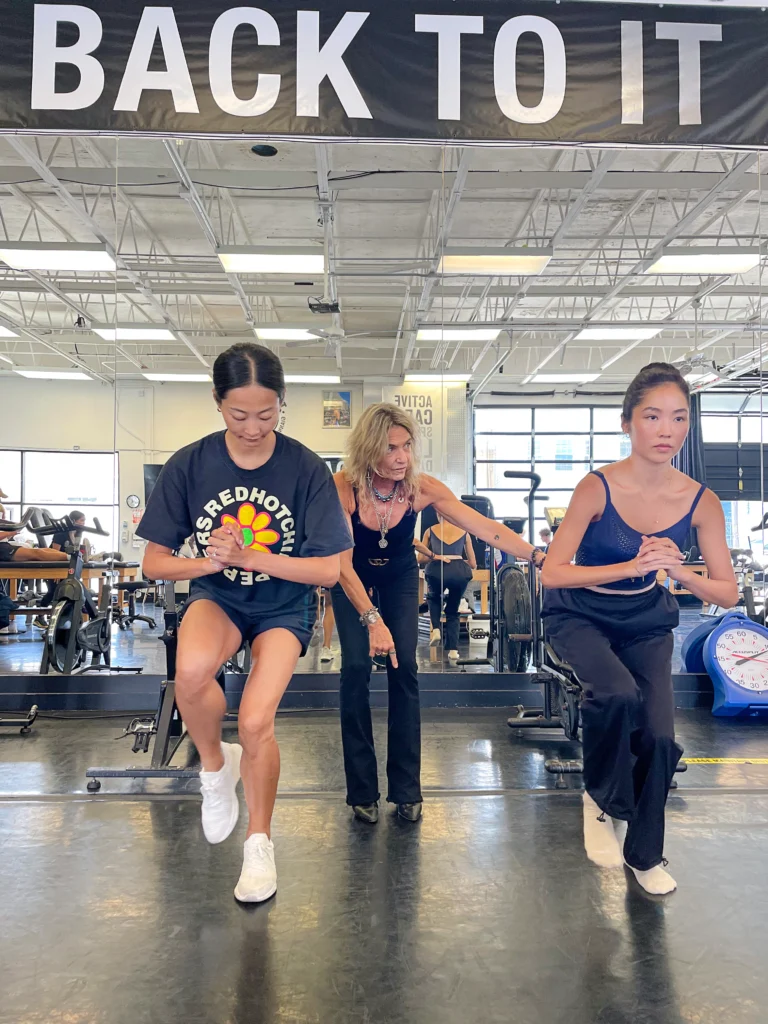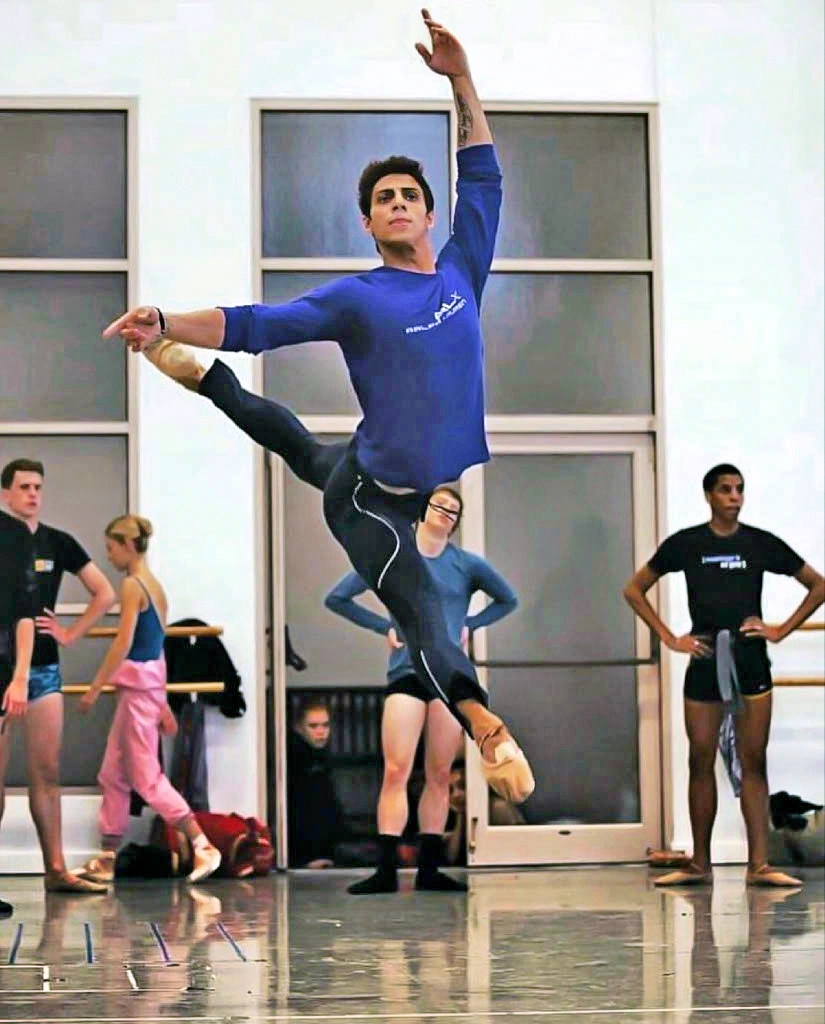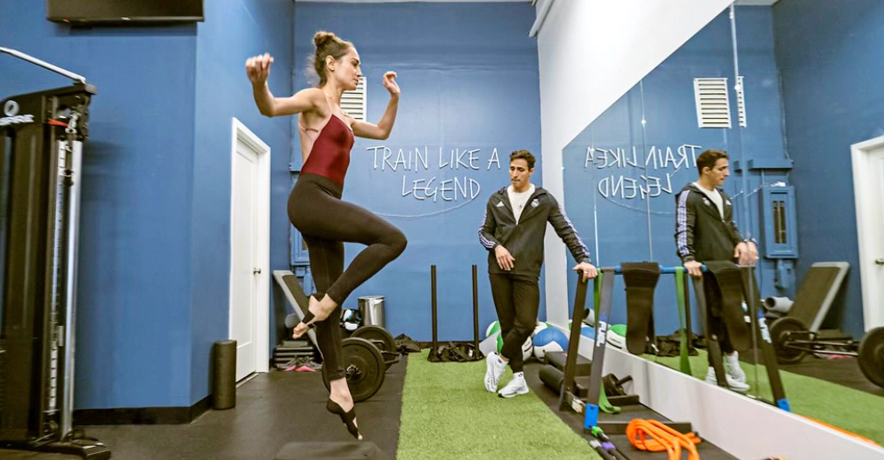Peak Performance Through Personal Training
With the amount of time dancers spend in class, rehearsals, and performing, prioritizing cross-training may become an afterthought. However, making time for conditioning with the guidance of a personal trainer can be key to helping you work smarter, ultimately preventing injuries and optimizing overall performance.
Whether you are a student or a professional, integrating personal training into your routine can be advantageous. Pointe chatted with experts who work regularly with dancers about their recommendations.
Common Misconceptions
One misgiving dancers may have about personal training is the fear that their bodies will become too muscular. In reality, it is considerably challenging to build extreme muscle mass. “We’re not trying to bulk you up,” explains Lisa Giannone, PT, founder of Active Care, a provider of physical therapy and conditioning for athletes and dancers in the San Francisco Bay Area, including San Francisco Ballet. “It’s about getting your body to work better for you and ultimately be durable to do all the things you do with confidence.”
Giannone began working with professional dancers more than two decades ago. She now coaches several dancers at her training facility, The Garage, located next to Active Care and home to Giannone’s specialized Hammer workout program.

Giannone has found that many dancers still have more to learn when it comes to how certain muscle groups work, such as their deep rotators. Working one-on-one with a personal trainer can help you understand what parts of the body to engage for certain movements and how to correctly use them. A personal trainer should know the primary and secondary muscles required to execute a movement, as well as the details of stabilization across joints. “The goal is to make all of these muscles active and available for use to improve performance and enhance stability.”
Dedicated training and body awareness can be key to preventing injuries, as former Boston Ballet dancer Jaime Diaz knows firsthand. During his dance career, he underwent six surgeries. “If I knew what I know now about how beneficial personal training is, I probably would not have gotten so injured,” says Diaz. “My injuries led me to understand my body more and what it needed to be stronger and less prone to getting hurt.” Diaz obtained his National Academy of Sports Medicine (NASM) certification in 2013 and now offers personal training through Ballet and Fitness Coaching in San Francisco.
Frequency of Training
While every dancer’s schedule is different, consistency is key to getting the benefits from personal training. “I find that clients get results gradually with consistent training twice a week and can feel, and see, the fruits of their work over two or three months,” says Diaz.
You can begin working with a personal trainer anytime during the year, and how often to work with one depends on your needs and schedule. “I had one dancer who was really tall and lacked strength for partnering,” says Diaz. “Since he had four weeks to make fast progress before joining his company, he was coming to me three times a week to help him build a stronger upper body.”
Diaz and Giannone both emphasize that the preseason is a crucial time for dancers to start preparing their bodies for the rigorous performance season. A personal trainer can be especially helpful.

Diaz advises that taking a week to ten days off during the summer break should suffice. Giannone recommends giving yourself a minimum of four weeks, but ideally six weeks, to start preparing for the upcoming season. This can entail training three to four times a week during the break (or as your schedule allows) and then supplementing to two days a week once the season begins. Giannone advises focusing on exercises that create “good stress,” or movements that yield targeted neuromuscular activation, non- to low-impact loading, and cardiovascular/heart-rate-driving bursts.
Many students spend their summers at school intensives. Depending on your workload and goals, you may want to add some cross-training to your regimen. Many trainers, including Diaz and Giannone, also offer virtual sessions. These trainers can also write a workout plan that you can incorporate into your schedule before class or whenever you have free time during your program.
Finding the Right Trainer
For dancers who are concerned about the financial commitment of working with a personal trainer, Diaz says many offer packages that provide a predetermined number of workouts, thus reducing the price per session.
With the number of trainers out there, it can be overwhelming finding someone who has experience training dancers and possesses deep knowledge of the muscle groups you tend to utilize and injure the most. Diaz cautions against relying too much on social media to gather information. A good starting point is to speak with your fellow dancers to see if any are already working with a trainer and get feedback on who they are working with. Look for coaches with certifications from top training institutions, such as NASM or the American Council on Exercise, or trainers with a strong academic background in exercise science. (Giannone holds degrees in kinesiology and physical therapy with a focus in biomechanics, for example.)
Ultimately, it’s important to have a conversation with potential coaches to understand if their methodology aligns with your goals. “See if they think like-mindedly with you. Ask them, ‘How would you approach my body? What would my training schedule be like?’ ” Giannone says.
Like other forms of cross-training, working with a personal trainer helps your body to perform better. “When you get to the peak of performance season, that’s when your body is going to need that strength the most,” says Diaz.






